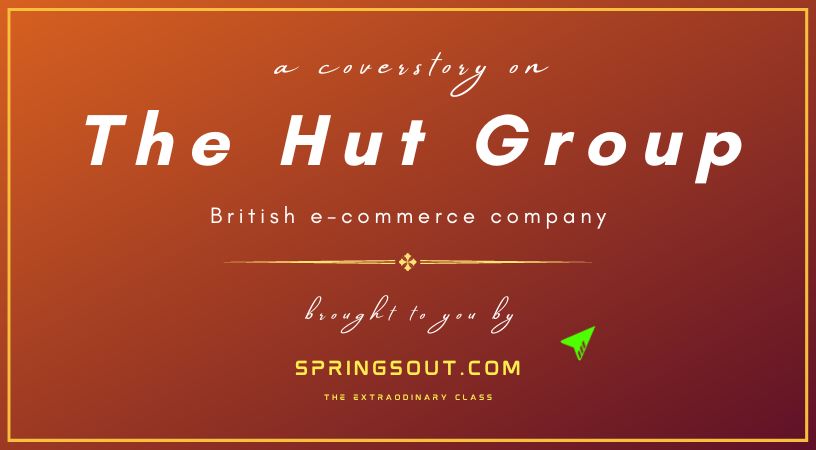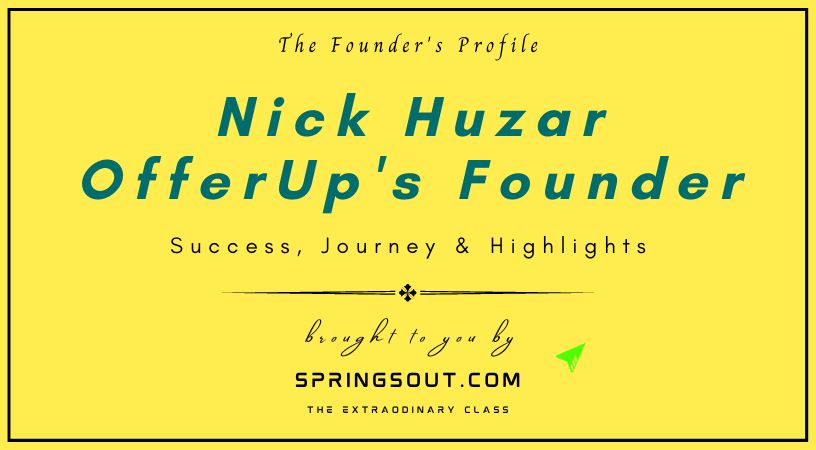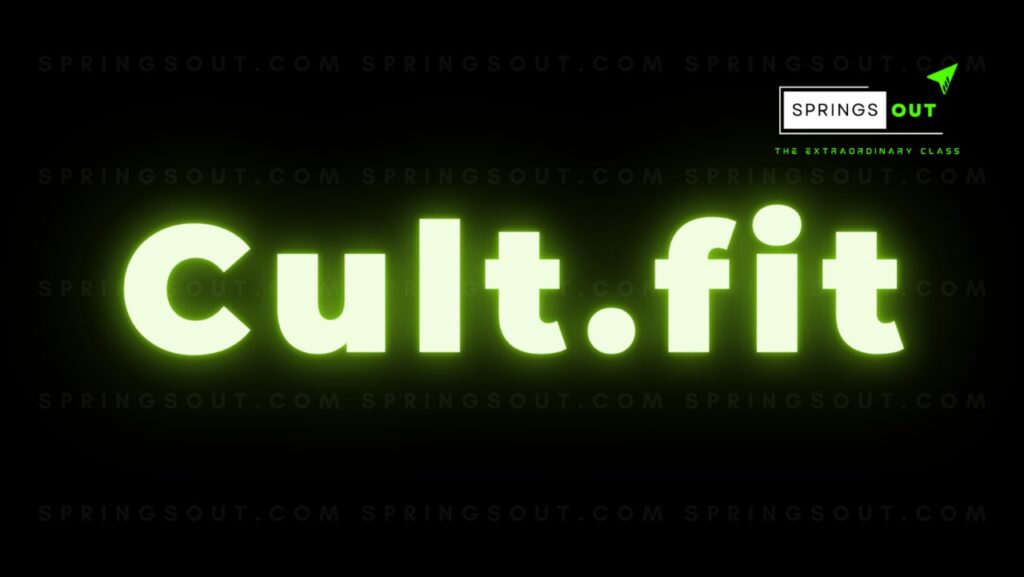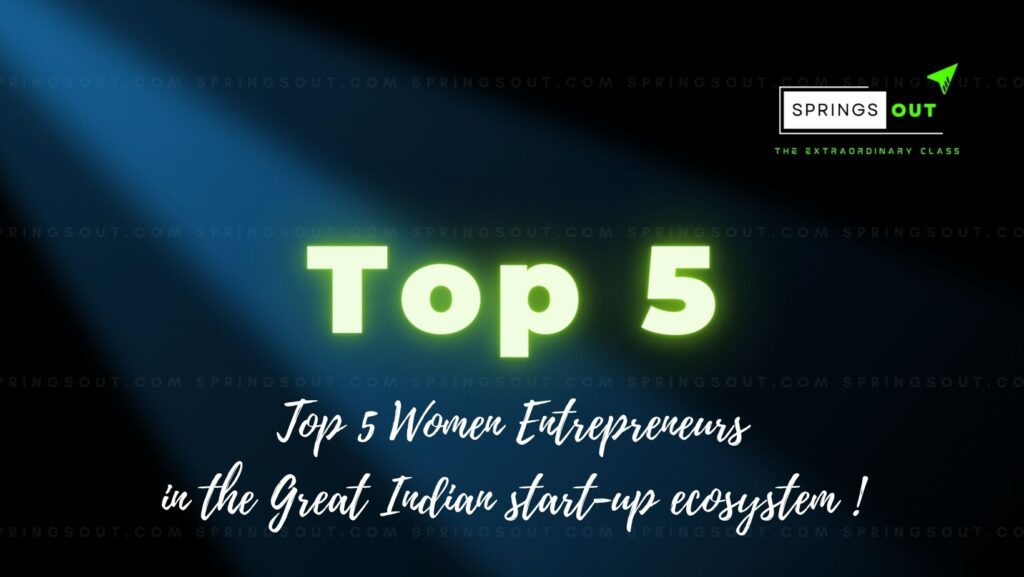
Quick Facts
Here are some quick facts about The Hut Group:
- Founded in 2004
- Headquartered in Manchester, UK
- Operates multiple e-commerce websites in the health, beauty, and lifestyle sectors
- Presence in over 180 countries
- Became a publicly listed company on the London Stock Exchange in September 2021
- One of the largest tech IPOs in the UK to date
- Known for innovation and growth, and has invested in technology, logistics, and data.
Brief
The Hut Group (THG) is a British e-commerce company that specializes in health, beauty, and lifestyle products. It was founded in 2004 and has since become one of the largest online retailers in the UK. THG operates several websites, including lookfantastic, myprotein, and hut.com, and has a presence in over 180 countries worldwide. In September 2021, THG became a publicly listed company on the London Stock Exchange, making it one of the largest tech IPOs in the UK to date. The company has a reputation for innovation and growth, and has invested heavily in technology, logistics, and data to drive its success.
Founders and Funding
The Hut Group was founded by Matthew Moulding and John Gallemore in 2004.
The company has received funding from several investors, including private equity firms and venture capital firms. In its latest funding round, THG raised $1 billion in September 2021 ahead of its IPO.
As a publicly listed company, THG’s funding is now largely derived from the stock market and its share price performance.
Fundraising
There is not much information on all the fundraising series details of The Hut Group. However, the company has raised significant capital through private equity and venture capital investments, as well as its $1 billion fundraising round ahead of its IPO in September 2021. More information about its funding history can be found by checking its financial statements or by conducting a search for news articles or press releases related to the company.
Founders Journey
The Hut Group was founded by Matthew Moulding and John Gallemore in 2004. Prior to starting THG, both founders had extensive experience in the retail and e-commerce sectors.
The company began as a small online retailer, but quickly grew through a combination of organic growth and strategic acquisitions. THG has since become one of the largest online retailers in the UK, operating several websites in the health, beauty, and lifestyle sectors.
Matthew Moulding and John Gallemore have been instrumental in driving THG’s success and growth, and have been recognized as two of the UK’s most successful entrepreneurs. Under their leadership, THG has become known for its innovation and has invested heavily in technology, logistics, and data to drive its business forward.
The company’s success has also been reflected in its stock market performance, with THG’s IPO in September 2021 being one of the largest tech IPOs in the UK to date.
Technologies Used
The Hut Group is known for its use of technology to drive its e-commerce business. Here are some of the technologies used by the company:
- E-commerce Platforms: THG operates several e-commerce websites, and uses custom-built platforms to power its online stores. These platforms are designed to provide a seamless shopping experience for customers and are optimized for mobile devices.
- Logistics and Warehouse Management Systems: THG has invested heavily in its logistics infrastructure, and uses sophisticated warehouse management systems to optimize its operations and ensure fast and efficient delivery of products to customers.
- Data Analytics: THG uses data analytics to drive its decision-making and optimize its operations. The company collects and analyzes data from various sources, including customer behavior and market trends, to inform its strategies and improve the customer experience.
- Artificial Intelligence and Machine Learning: THG uses artificial intelligence and machine learning to automate processes, improve efficiency, and enhance the customer experience. For example, the company uses these technologies to personalize product recommendations, improve search results, and optimize pricing strategies.
These are just a few examples of the technologies used by THG. The company is known for its commitment to innovation and is constantly exploring new technologies to drive its business forward.
Rise and Success
The Hut Group (THG) has experienced significant growth and success since its founding in 2004. Here are some of the key factors that have contributed to the company’s rise and success:
- Strategic Acquisitions: THG has grown through a combination of organic growth and strategic acquisitions. The company has acquired several e-commerce businesses and brands over the years, which has helped to expand its product offerings and reach.
- Investment in Technology: THG has invested heavily in technology, including custom-built e-commerce platforms, logistics and warehouse management systems, and data analytics tools. These investments have helped the company to optimize its operations and improve the customer experience.
- Focus on Customer Experience: THG is known for its focus on the customer experience and has invested in technologies and processes to ensure that customers have a seamless and enjoyable shopping experience.
- Expansion into Global Markets: THG has a presence in over 180 countries and has successfully expanded into global markets. The company has a strong brand and a reputation for delivering high-quality products and exceptional customer service, which has helped it to grow its customer base and reach new markets.
- Strong Leadership: THG has benefited from strong leadership, with co-founders Matthew Moulding and John Gallemore being recognized as two of the UK’s most successful entrepreneurs. Under their leadership, the company has a culture of innovation and a focus on growth, which has been key to its success.
These are some of the key factors that have contributed to THG’s rise and success. The company’s IPO in September 2021, which was one of the largest tech IPOs in the UK to date, is a testament to its success and growth trajectory.
Competition and Challenges
Like any company operating in a competitive market, The Hut Group (THG) faces challenges and competition. Here are some of the challenges and competitive factors in the e-commerce industry:
- Competition from Established Retailers: THG faces competition from established retailers, both online and offline, who have a strong presence in the markets where THG operates. These retailers have significant brand recognition and customer bases, which can be difficult for THG to compete with.
- Customer Acquisition Costs: Acquiring new customers can be expensive in the e-commerce industry, and THG faces significant competition for customer attention and spend. The company must continue to invest in marketing and customer acquisition strategies to maintain its growth.
- Supply Chain Challenges: Ensuring the efficient and cost-effective delivery of products to customers is a significant challenge in the e-commerce industry. THG must manage its logistics and warehouse operations effectively to ensure that it can meet customer demand while keeping costs under control.
- Technological Advances: The e-commerce industry is rapidly evolving, and THG must stay ahead of the curve in terms of technology and innovation to remain competitive. The company must continually invest in new technologies and processes to improve the customer experience and maintain its growth.
- Regulatory Challenges: THG operates in a number of different countries and must comply with the regulations and laws in each of these markets. Ensuring compliance with these regulations can be challenging and time-consuming, and can impact the company’s ability to grow and scale.
These are some of the challenges and competitive factors that THG faces in the e-commerce industry. The company has a strong track record of overcoming challenges and adapting to change, and will likely continue to do so as it grows and expands in the future.
Journey and Milestones
The Hut Group (THG) has had a remarkable journey since its founding in 2004, achieving many milestones along the way. Here are some of the key milestones in THG’s journey:
- Founding: THG was founded in 2004 by Matthew Moulding and John Gallemore with the goal of creating a leading e-commerce company.
- First Acquisitions: In 2007, THG acquired its first e-commerce business, Iwantoneofthose.com. This marked the beginning of the company’s growth through strategic acquisitions.
- Expansion into Global Markets: Over the years, THG has successfully expanded into global markets and now has a presence in over 180 countries.
- Investment in Technology: THG has consistently invested in technology, including custom-built e-commerce platforms, logistics and warehouse management systems, and data analytics tools. These investments have helped the company to optimize its operations and improve the customer experience.
- IPO: THG’s initial public offering (IPO) in September 2021 was one of the largest tech IPOs in the UK to date, and marked a major milestone in the company’s journey.
- Acquisitions and Partnerships: THG has continued to grow through acquisitions and partnerships, acquiring several e-commerce businesses and brands and forming partnerships with leading companies in the beauty and wellness industries.
These are some of the key milestones in THG’s journey. The company has come a long way since its founding in 2004 and is well positioned for continued growth and success in the future.
Key Takeaways and Learnings
The Hut Group (THG) is a successful e-commerce company that has achieved significant growth and success since its founding in 2004. Here are some key takeaways and learnings from THG’s journey:
- Strategic Acquisitions: THG has grown through a combination of organic growth and strategic acquisitions. This has allowed the company to expand its product offerings and reach new markets.
- Investment in Technology: THG’s consistent investment in technology, including custom-built e-commerce platforms, logistics and warehouse management systems, and data analytics tools, has been key to its success. These investments have helped the company to optimize its operations and improve the customer experience.
- Focus on Customer Experience: THG’s focus on the customer experience and its investment in technologies and processes to ensure a seamless shopping experience have been key to its success.
- Expansion into Global Markets: THG’s successful expansion into global markets has been a major factor in its growth and success. The company’s strong brand and reputation for delivering high-quality products and exceptional customer service have helped it to reach new markets and grow its customer base.
- Strong Leadership: THG’s strong leadership, with co-founders Matthew Moulding and John Gallemore being recognized as two of the UK’s most successful entrepreneurs, has been critical to the company’s success. The company’s culture of innovation and focus on growth has helped it to overcome challenges and achieve its goals.
These are some of the key takeaways and learnings from THG’s journey. The company’s success provides valuable insights into what it takes to succeed in the e-commerce industry and offers lessons that can be applied to other businesses.
Uniqueness
The Hut Group (THG) is a unique e-commerce company that has differentiated itself in several ways:
- Vertical Integration: THG has vertically integrated its operations, including product development, manufacturing, logistics, and e-commerce. This has allowed the company to have greater control over the customer experience and improve efficiency in its operations.
- Technology-Driven: THG is a technology-driven company that has consistently invested in technology to optimize its operations and improve the customer experience. The company’s custom-built e-commerce platforms, logistics and warehouse management systems, and data analytics tools are examples of how technology is a key differentiator for THG.
- Focus on Customer Experience: THG has a strong focus on the customer experience and has invested in technologies and processes to ensure a seamless shopping experience. This focus on the customer experience has helped the company to build strong relationships with its customers and maintain high levels of customer loyalty.
- Global Reach: THG has a global reach, with a presence in over 180 countries. The company’s strong brand and reputation for delivering high-quality products and exceptional customer service have helped it to reach new markets and grow its customer base.
- Diversified Portfolio: THG has a diversified portfolio of e-commerce businesses and brands, including health and beauty, sports nutrition, and home and garden. This diversification has helped the company to mitigate risk and ensure stability in its operations.
These are some of the ways in which THG is unique in the e-commerce industry. The company’s combination of vertical integration, technology-driven operations, focus on customer experience, global reach, and diversified portfolio sets it apart from its competitors and has been critical to its success.
Market Insights and Industry Trends: Impressions and Expressions
Some market insights and impressions about The Hut Group (THG).
THG’s success can be attributed to a number of factors, including its diversified portfolio of e-commerce businesses and brands, focus on technology and innovation, and strong leadership. The company’s vertical integration and investment in technology have enabled it to streamline its operations and improve the customer experience, making it a key player in the e-commerce industry. Additionally, THG’s global reach and reputation for delivering high-quality products and exceptional customer service have helped it to establish a strong brand presence and customer loyalty.
THG operates in a highly competitive e-commerce market, with competitors ranging from major online retailers like Amazon to specialized e-commerce businesses. However, THG’s diversified portfolio and focus on technology and innovation have helped it to differentiate itself and remain competitive. The company has also benefited from the growing trend towards e-commerce and the increasing consumer demand for online shopping.
Overall, THG’s success and market position are a testament to its ability to adapt and innovate in a rapidly-changing industry.
SWOT Analysis
Here’s a SWOT analysis of The Hut Group (THG):
- Vertically integrated operations
- Diversified portfolio of e-commerce businesses and brands
- Global reach and strong brand reputation
- Investment in technology and innovation
- Strong leadership team
- Dependence on a few key markets for revenue
- Reliance on third-party logistics providers for some operations
- Limited brick-and-mortar presence
- Growing demand for e-commerce and online shopping
- Expansion into new markets and product categories
- Strategic acquisitions to strengthen and diversify the business
- Investment in technology to improve operations and the customer experience
- Competition from established e-commerce players and new entrants to the market
- Economic downturns and fluctuations in consumer spending
- Supply chain disruptions and logistics challenges
- Regulatory changes and challenges in international markets
PESTLE Analysis
Here’s a PESTLE analysis of The Hut Group (THG):
- The regulatory environment can impact THG’s operations and expansion plans in different markets
- Changes in government policies and trade agreements can also affect the company’s international operations
- Economic conditions and consumer spending patterns can impact THG’s revenue growth and profitability
- THG’s global presence means that it is exposed to currency exchange rate fluctuations and geopolitical risks
- Changing consumer preferences and trends can impact THG’s product offerings and marketing strategies
- The company’s reputation for social responsibility and sustainability can also impact consumer perceptions and loyalty
- THG’s investment in technology and innovation is a key strength, but the company must also keep pace with evolving technologies and customer preferences
- Data privacy and security concerns also present potential risks and challenges for THG
- Changes in laws and regulations related to e-commerce and data privacy can impact THG’s operations and growth strategies
- The company must also ensure compliance with intellectual property laws, as well as regulations related to international trade and labor practices
- As consumers become more conscious of environmental sustainability, THG’s focus on eco-friendly practices and products could present opportunities for growth
- However, the company’s operations and supply chain also present potential environmental risks and challenges.
Overall, THG’s global presence and investment in technology and innovation position it well to navigate the opportunities and challenges presented by the PESTLE factors. However, the company must continue to monitor and adapt to changes in the political, economic, sociocultural, technological, legal, and environmental landscape to maintain its competitive edge.
4 P’s of Marketing
The 4 P’s of marketing are product, price, place, and promotion. Here’s how they apply to The Hut Group (THG):
THG offers a range of products across multiple e-commerce businesses and brands, including beauty, fashion, health and wellness, and sports nutrition. The company focuses on offering high-quality, premium products that appeal to its target customers.
THG uses a dynamic pricing strategy, adjusting prices based on factors such as customer demand, competition, and seasonality. The company also offers a range of pricing tiers to appeal to different customer segments and price sensitivity levels.
THG operates globally, with a strong presence in key markets such as the UK, Europe, and North America. The company also uses a range of distribution channels, including its own e-commerce websites, third-party marketplaces, and retail partnerships.
THG uses a range of marketing and promotional strategies to reach and engage with its target customers. This includes social media advertising, influencer partnerships, email marketing, and loyalty programs. The company also places a strong emphasis on customer service and satisfaction, using customer reviews and feedback to improve its products and services.
Overall, THG’s focus on high-quality products, dynamic pricing, global reach, and innovative marketing and promotion strategies help the company to stand out in the highly competitive e-commerce market.
Porters Five Forces Framework
Here’s a Porter’s Five Forces analysis of The Hut Group (THG):
- Threat of new entrants: The e-commerce industry is highly competitive, and there is a low barrier to entry for new players. However, THG’s diversified portfolio of e-commerce businesses and brands, strong brand reputation, and investment in technology and innovation make it difficult for new entrants to gain a foothold in the market.
- Bargaining power of suppliers: THG’s vertical integration and direct-to-consumer model give it greater control over its supply chain and reduce the bargaining power of suppliers. However, the company may still face challenges related to raw material costs, logistics, and production capacity.
- Bargaining power of buyers: As a customer-centric business, THG places a strong emphasis on customer service and satisfaction. However, the highly competitive nature of the e-commerce market means that customers have a wide range of choices, which can increase their bargaining power and put pressure on pricing and margins.
- Threat of substitutes: The e-commerce industry faces a range of substitutes, including brick-and-mortar retailers, marketplaces, and social commerce platforms. However, THG’s strong brand reputation, global reach, and investment in technology and innovation make it difficult for substitutes to compete on the same level.
- Rivalry among existing competitors: The e-commerce industry is highly competitive, with a range of established players and new entrants vying for market share. However, THG’s diversified portfolio, investment in technology and innovation, and strong brand reputation give it a competitive edge over its rivals.
Overall, THG’s strong brand reputation, investment in technology and innovation, and diversified portfolio of e-commerce businesses and brands position it well to navigate the challenges and opportunities presented by Porter’s Five Forces.
Focus and Summary
The Hut Group (THG) is a leading e-commerce company that was founded in 2004 and has since grown to become a global player in the industry. THG’s focus on technology and innovation has been a key factor in its success.
The company has vertically integrated its operations, including product development, manufacturing, logistics, and e-commerce, which has allowed it to have greater control over the customer experience and improve efficiency in its operations.
THG is also technology-driven and has consistently invested in technology to optimize its operations and improve the customer experience. The company has a strong focus on the customer experience and has invested in technologies and processes to ensure a seamless shopping experience.
THG has a global reach, with a presence in over 180 countries, and a diversified portfolio of e-commerce businesses and brands, including health and beauty, sports nutrition, and home and garden.
These factors, along with strong leadership, have been critical to THG’s success and make it a unique player in the e-commerce industry.
*Disclaimer
We highly welcome all the great suggestions, complaints about any errors, inappropriate information that seek correction, and highly recommend that you may please feel free to write to us at hi@springsout.com and share your feedback with us.
All the details mentioned above have been written and composed by researching from the various resources both online and offline. All with the help of books & magazines, corporate websites, founders websites, business websites and search engines like google.com, bing.com et al. The sole purpose of sharing this information is to boost the zeal of entrepreneurship and ignite the passion of many budding entrepreneurs.









